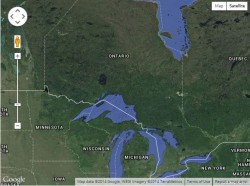Our History
In 2005 Richard Louv published Last Child in the Woods: Saving Our Children from Nature-deficit Disorder. The central idea of the book was that regular experience in nature is a fundamental requirement for healthy human development. Louv pointed to a growing body of evidence-based scientific literature that relates many health and wellness issues with the lack of time children spend outdoors in nature. To characterize the results, Louv coined the term nature-deficit disorder, which “…describes the human costs of alienation from nature, aiming them: diminished use of the senses, attention difficulties, and higher rates of physical and emotional illness.” Louv’s compelling expression of the human need for nature sparked an international movement to connect children with nature. Today, based on a large and increasing body of scientific research, regular experience in nature is increasingly seen as a foundational element in the positive development of happiness, healthy, and intellectual capacity in children.
In 2008, Ontario’s Royal Botancial Gardens (RBG) convened a meeting of a wide group of interested partites with the objective of establishing a collaborative effort to promote the child and nature movement in Ontario. As a result of the gathering, RBG, Parks and Recreation Ontario (PRO) and Ontario Nature joined together to approach the Ontario Trillium Foundation (OTF) with a proposal to fund a child and nature initiative. The intent was to create a network of organizations that build community capacity to connect children with nature. In April, 2011, with the generous support of the OTF, the Back to Nature Network (B2N) began work to accomplish this goal.
The Back to Nature Network is a collaborative of organizations from across Ontario. Sectors include education, health, planning, early child development, environmental stewardship, and active healthy living. The inspiration for this effort is envisioning a world where all children have access to nature within walking distance of their homes, and regular opportunities to spend meaningful time in it, and to create this world with on-the-ground actions. The primary function of the network is to support all organizations working to further the connection of children and families with nature by producing useful materials and acting as a hub to advance communication and cross-sectorial collaboration.




